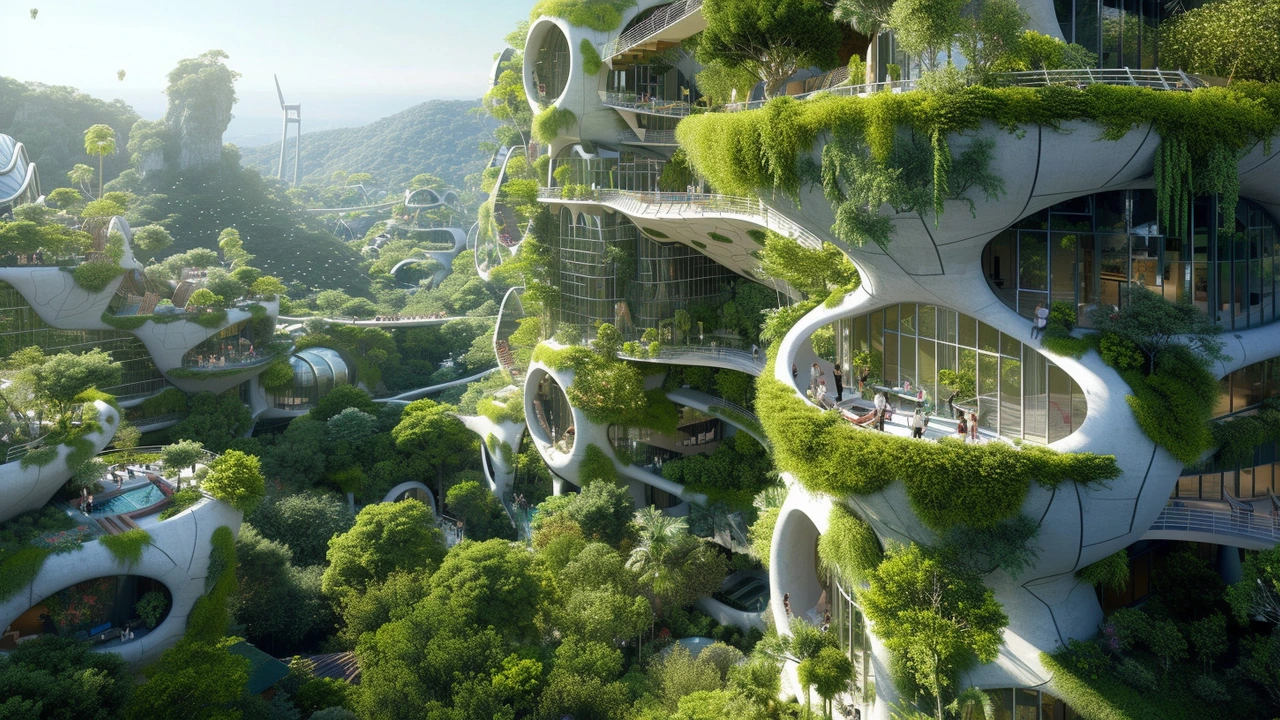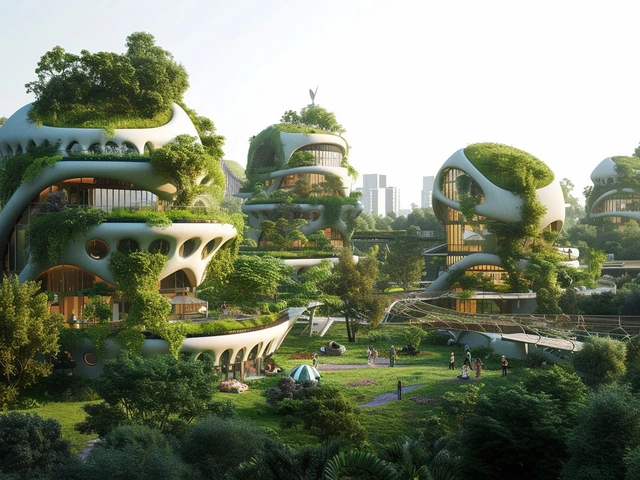What is Sustainable Architecture and Why it Matters
Sustainable architecture is a fascinating quest for harmony between human habitats and the natural world. It goes beyond aesthetics or function; it's about creating structures that minimize environmental impact while enhancing the quality of life for occupants. It's where the magic happens, balancing innovation with conservation, blending the built environment seamlessly into the fabric of the ecosystem.
Why does this matter? Let's look at the numbers: buildings account for roughly 40% of global energy usage and a third of greenhouse gas emissions. The way we build and operate our spaces has a direct influence on climate change, resource depletion, and the health of our communities. Sustainable architecture aims to pivot from these daunting figures towards more responsible, efficient, and harmonious practices.
But it's not just about the environment. Sustainable design can lead to energy savings, lower utility bills, and healthier living spaces. It's a holistic approach that considers lifecycle costs, not just upfront construction expenses. The push for sustainability isn't just idealistic; it's economically and socially prudent.
The Cornerstones of Sustainable Design
In the realm of sustainable architecture, certain core principles steer the ship. First comes optimizing site potential – that means considering the location and its environment to maximize natural heating, cooling, and lighting. Renewable energy sources such as solar, wind, or hydro play leading roles here, transforming the site from energy consumer to producer.
Water efficiency is another critical element. Innovative rainwater harvesting systems, gray water recycling, and low-flow fixtures are changing the game, conserving a precious resource while reducing strain on municipal systems. Material selection is the next cornerstone, with a shift towards locally sourced, renewable, or recycled components that lower the carbon footprint and encourage a circular economy.
But let's not forget about the occupants. Indoor environmental quality significantly impacts the well-being of those who inhabit these spaces. Natural light, superior air quality, and toxin-free materials are just a start. These are all investments not just in a building, but in the health and productivity of individuals.
Tech Innovations Shaping Sustainable Architecture
Technology is a game-changer in sustainable architecture. Cutting-edge tools like Building Information Modeling (BIM) allow architects to simulate and optimize buildings even before the first brick is laid. Energy modeling software helps to fine-tune efficiency, and smart sensors can micro-manage consumption of water and electricity, adapting in real-time to how the space is used.
New materials are also hitting the scene – think self-healing concrete, phase-changing materials for temperature regulation, or panels that scrub CO2 from the air. There's a whole world of options emerging from labs and onto construction sites that are set to redefine what buildings look like and how they function.
But perhaps the most exciting developments are those that encourage buildings to interact with their environment. Living roofs and walls not only insulate and beautify but also contribute to biodiversity and manage stormwater. Natural ventilation systems that mimic termite mounds or the cooling effects of trees are making buildings work smarter, not harder, by leveraging the genius of nature.
Sustainable Architecture in the Urban Fabric
The urban landscape is ripe for the inclusion of sustainable architecture. Dense city environments face unique challenges like heat island effects, pollution, and the need for compact, efficient use of space. This is where sustainable architecture can shine by transforming rooftops into gardens, integrating green spaces into public areas, and ensuring walkability and access to public transportation to reduce car dependency.
Affordable housing projects are also reaping the benefits of green design. More than just shelters, these are platforms for instilling sustainable habits, community strength, and resilience. From refurbishments that breathe new life into old structures with green upgrades to new builds that set standards for affordability and efficiency, we're seeing a shift towards more equitable and environmentally responsible urban living.
Then there is the role of governments and institutions. Policies and incentives play a pivotal role in shaping the adoption of sustainable practices. From strict building codes mandating energy performance to grants and subsidies for green infrastructure, the public sector's influence in steering the industry towards sustainability cannot be underestimated.
Embracing Sustainability Beyond the Blueprint
Embracing sustainability goes beyond design and construction. It's about the lifecycle of a building, its adaptability, and its capacity to coexist with the evolving needs of society. That means planning for the future with flexible spaces that can be repurposed, a commitment to maintenance and upgrades, and a conscious effort to support community initiatives that bolster sustainability.
Education and advocacy are also part of this picture. Bringing the ethos of sustainable design into schools, workplaces, and even homes cultivates a culture of environmental stewardship. It's about shaping mindsets as much as shaping buildings.
Finally, the true measure of sustainability may come from the legacy these buildings leave behind. It's the stories they tell about the values of the society that created them, the heritage of a civilization that dared to build with an eye towards the future, and a heart for the planet.




